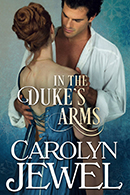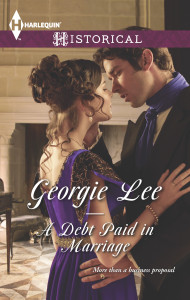Game Laws — More complicated than you think
My current project involves a scene in which my hero (a duke!) is at his hunting box in December. As I was writing this scene, several questions arose.
1. The term “hunting box.” I have seen the term in historical romances, but is it period? The answer is yes. A hunting box implies something small, but in looking at images and floor plans, these structures were not small. This makes sense if you think about the need to accommodate staff, guests, and their servants AND the equipment, horses and dogs.
2. Who was allowed to hunt and why is, for England, a question of class and rank that comes down to this: if you needed to hunt to put food in your belly, chances are you were legally prohibited from doing so. In order to demarcate who was of sufficient rank to be allowed to hunt, there were any number of thresholds; your family, property you owned, a legal entitlement you might possess, your yearly income, the value of your estate. It’s exactly as complicated as you’d imagine when the real requirement is that you be of sufficient rank–in a culture where rank was derived from ownership of land. Down there at the border between “commoner” and “has enough money and does not need a job” there were ambiguities.
3. If you were a gentleman with the right to hunt—likely on your own property, you also had servants, and those servants, by law, were not permitted to hunt. Laymen could not legally be in possession of the implements of hunting; breeds of hunting dogs, guns, snares, nets, and the like. Nor could they be in possession of game. The penalties could be severe: significant fines, months to years in jail, and, even, transportation. What, then, was the gentleman to do when his servants were prevented from assisting in his hunting? We’ve all seen pictures of servants holding hunting equipment. The answer is a certificate; a document that granted a legal exemption from the laws.
This certificate was a legal document obtained yearly from a local clerk appointed specifically to issue the certificate. If there was no appointed clerk, the local land surveyor would issue the certificate. The certificate cost 3 pounds 1 shilling. The servant or other layman was required to produce the certificate on demand.
Think, then, what this would mean for a household with sporting gentlemen. Legally, only servants who had been issued certificates could accompany their employers on hunts where they would be required to hold or handle dogs, dead or living game, or other hunting paraphernalia.
4. The Gamekeeper was another position entirely, and there were, again, specific legal requirements to be met in order to exempt a layman from the usual restrictions against hunting, and to prevent a land owner from appointing more than one. A Gamekeeper had what amounted to limited police powers. He could seize game and equipment from others, and he could detain them and search property. A lord or lady of a manor could appoint one and only one gamekeeper per property. The position would naturally be one of power, as you would expect, both among and over the local commoners and among other servants. In historical novels in our period, we should be mindful of the importance of the position and of the legal and extra-legal powers that came with it.
Game Seasons, Restrictions etc.
There were also, as you would expect, hunting seasons. Humans the world over have understood that if you do not allow future generations of animals to procreate and raise their young, you will not have future animals. It should be no surprise that the hunting that the proscribed periods coincide with the breeding and raising of young, and that, for birds, that included leaving the nests and eggs alone.
Here is a list I put together from the 1809 Game laws. Obviously, it’s possible the dates were different in different years, but likely not by much, if at all. I did my best to decode the day of certain holidays. For some there were inconsistent results. I also added the NO and YES months for hunting as after a bit my brain hurt.
But, at last, a handy chart to refer to! Would they REALLY have been hunting grouse in June?
| 1-June to 1-Oct | Moulting season for water fowl. NO: June July Aug, Sep YES: Oct, Nov, Dec, Jan, Feb, Mar, Apr May |
| 1-Feb to 1-Sep | Partridge NO: Feb, March, Apr, May June July Aug YES: Sep Oct, Nov, Dec, Jan |
| 1-Feb to 1-Oct | Pheasant – unless kept in a mew or breeding place NO: Feb, March, Apr, May June July Aug Sep YES: Oct, Nov, Dec, Jan |
| 10-Dec to 20-Aug | Black game (birds except grouse) aka heath fowl NO: Dec-10 Jane Feb March Apr May June July Aug-20 YES: Aug 21, Sep. Oct Nov Dec 9 |
| 10-Dec to 12-Aug | red game (grouse) NO: Dec-10 Jane Feb March Apr May June July Aug-12 YES: Aug 13, Sep. Oct Nov Dec 9 |
| 1-Mar to 1-Sep | bustard NO: March, Apr, May June July Aug YES: Sep Oct, Nov, Dec, Jan Feb |
| 10-Dec to 1-Sep | Heath fowl in New Forest Co of Southampton (black game) NO: Dec-10 Jane Feb March Apr May June July Aug YES: Sep 2. Oct Nov Dec 9 |
| 2-Feb to 24-June | No burning of gaig, link, heath, furze, goss or fern for preservation of black game and grouse on nay mountains, hills, heaths, moors, forests, chases or other wastes |
| 1-Mar to 30-June | No taking eggs of wild birds |
HUNTING SEASONS (Possibly Not strictly observed)
Pedestrian animals: hart, hind, buck, doe, boar, fox, and hare
| 24-Jun to 14-Sep | Hart and buck from St. John the Baptist day til Holyrood-day |
| 14-Sep to 2-Feb | Hind and doe: Holyrood to Candlemas |
| 25-Dec to 2-Feb | Boar: Christmas to Candlemas |
| 25-Dec to 25-Mar | Fox: Christmas to Lady-day. Lady day is either Jan 1 (which does not make sense, or March 25-ish, which makes more sense) |
| 29-Sep to 2-Feb | Hare: Michaelmas til Candlemas |
Miscellaneous Rules
No hunting at night. No hunting on Sunday or Christmas. Morning is either 6 AM, 4 AM, or 8 AM depending on the bird and time of year.
No tracing and killing hares in the snow.
No lord or lady of any manor shall appoint more than one gamekeeper within one manor, with power to kill game. Gamekeeper must be registered with the clerk of the peace in the county in which said manor lies.
Persons are forbidden to bear any hawk of the breed of England called nyesse, goshawk, passel, laner, loneret or falcon or disturb or slay them. Same for eggs.
FISHING
No unauthorized fishing between 6:00AM and 6:00PM.
There you have it.




